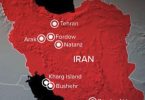KIGALI, Rwanda – Charlene Jendry, an American conservationist, made a maiden visit to the Akagera National Park in Rwanda in 1990. Lions were the prime tourist attractions then. Jendry stayed at Gabiro Guest House, a magnificent safari lodge, right in the middle of the jungle. Jendry had a spectacular experience and then flew back to USA only to return to Rwanda five years later, in 1995. The park had changed, with almost no lions in the park. The big cats’ number had immensely declined, headed towards extinction.
Lions’ sudden disappearance
After the 1994 genocide against the Tutsi, thousands of Rwandan refugees returned from exile with extended families. Some were pastoralists. Others were farmers. Land for cultivation and rearing cattle became scarce. The government was forced to cut off a huge chunk of Akagera national park for farmers and herders. More often, wild animals would be hunted and killed. Lions fought back, defending their territories. They eventually started attacking cattle. Cattle keepers would poison the cattle carcasses, killing prides of 9 to 12.
By the year 2000, these lions were no more. Tourists expressed frustration at not seeing lions. Rwanda considered importing lions from South Africa, but the move never materialized.
Kenya this year endorsed giving out eight lions to Rwanda. But Kenya’s wildlife conservation groups are opposing it. They want Rwanda to explain the extinction of its lion population. Meanwhile, Akagera Park Manager, Gruner says once the lions arrive, they will be kept in a boomer for monitoring before being released into the wild with a GPS tracking collar.
“The park should be able to know the location of every lion all the time,” says Gruner.
A study conducted helped to ensure they will survive in Akagera’s savanna terrain.
Tight protection
The extinction of the lions gave buffalos, antelopes, zebras and other herbivores freedom to move and even graze in farmers’ plantations.
In 2010 the government installed a 1.8 high electric fence on a 110-kilometer area, worth Rwf $2.7 billion ($4 million). Akagera plans to accommodate buffaloes, leopards, elephants, black rhinos and lions. Jendry, founder of Partners in Conservation from Columbus, Ohio, was amazed when she heard of Rwanda’s plan to bring back the lions.
“It is a good strategy, it will encourage more visitors,” Jendry says.





















